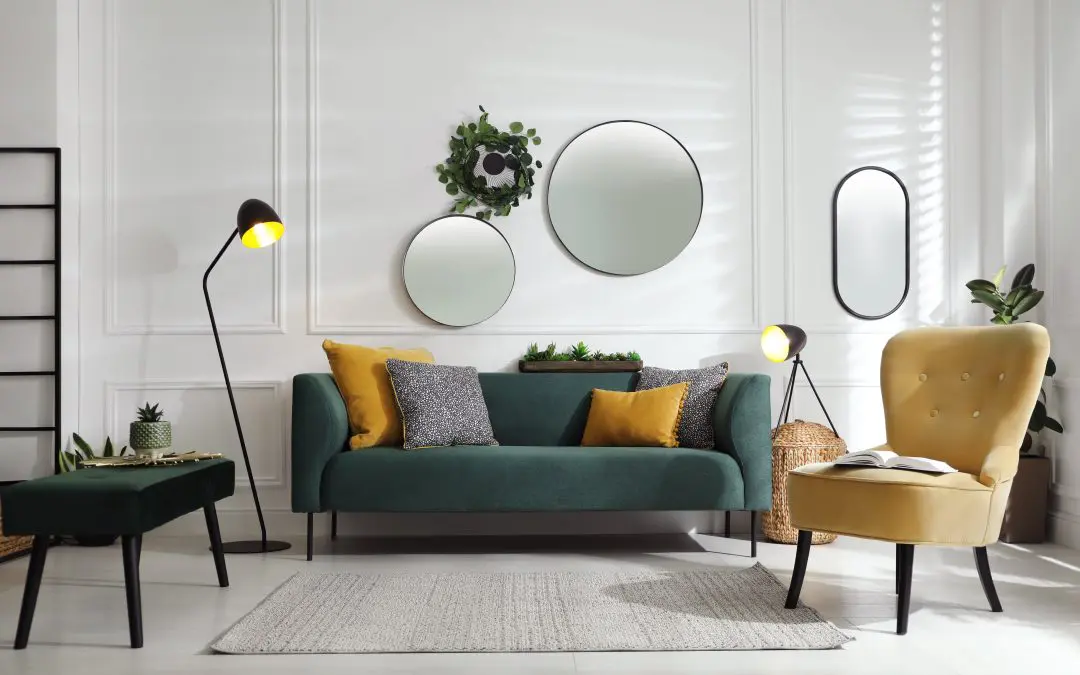Your living room is where you entertain guests, relax after a long day, or spend quality time with family. The furniture you choose should reflect your style and support your lifestyle. In this guide, we’ll walk you through some tips for choosing living room furniture.
Start With How You Use the Space
Before you shop, think about how you actually use your living room. Is it a space for quiet reading and relaxation, or is it where your family gathers for movie night? Do you host large groups of friends often, or is it just you and your partner?
Understanding the room’s purpose will help you determine what furniture you need. For example, a family that watches TV regularly will likely want a large, comfortable sectional sofa and maybe a recliner. Someone who hosts wine nights or book clubs might want more accent chairs and side tables for conversation and convenience.
Choosing Living Room Furniture: Measure Twice, Buy Once
Measure the room’s dimensions, including doorways, windows, and the distance between walls. Then, consider traffic flow. Leave enough space to walk comfortably around your furniture—ideally 30 to 36 inches between major pieces. Using painter’s tape on the floor to outline where your new furniture will go is a great way to visualize how it will all fit together.
Prioritize Comfort and Durability
Style is important, but don’t sacrifice comfort, especially if this is a room you’ll be spending a lot of time in. Sit on the sofa, test out the chairs, and feel the texture of the upholstery. Does it feel like a space you’ll want to lounge in for hours?
Think about durability. If you have kids or pets, you’ll want stain-resistant fabrics and easy to clean. Performance fabrics have come a long way in recent years and look just as stylish as traditional materials while offering added durability.
Create a Balanced Layout When Choosing Living Room Furniture
A well-balanced room feels cohesive and inviting. Avoid placing all your furniture against the walls, especially in larger rooms. Pulling pieces toward the center creates a more intimate and functional conversation area.
Balance is all about placement, scale, and proportion. A tiny coffee table next to an oversized sectional will look out of place, just like a small love seat will get lost in a large, open-concept living room. Choose furniture that fits the scale of your room and complements the other pieces around it.
Mix Style and Function with Key Pieces
Think of your main furniture pieces as your foundation: the sofa, chairs, coffee table, and entertainment unit. These should be stylish and functional. From there, layer in personality with accent pieces like ottomans, side tables, and shelving units.
Storage is often overlooked in living rooms, but it makes a huge difference. Pick furniture that does double duty, like a storage ottoman or a media console with drawers and cabinets to hide clutter. Smart furniture choices keep your living room looking tidy while supporting your everyday needs.
Don’t Forget Lighting and Accessories
The right lighting can transform the feel of your living room. A combination of overhead lighting, floor lamps, and table lamps will add warmth and depth to the space.
Finish the room with accessories that bring your personality into the space—throw pillows, rugs, artwork, and plants. These details will make your living room feel complete.
With these tips, you’ll create a space that’s as functional as it is beautiful. Your living room should feel inviting, reflect who you are, and support your lifestyle.
FAQs About Choosing Living Room Furniture
Should all living room furniture match?
Not at all. In fact, mixing styles, textures, and colors can make a space feel more layered and interesting. Just be sure there’s a common thread—like a color palette or design style—that ties everything together.
How do I choose the right coffee table?
Pick one that complements the size of your seating area. Ideally, it should be about two-thirds the length of your sofa and sit at roughly the same height as the cushions. Make sure there’s enough room to walk around it comfortably.
What’s the best layout for a small living room?
In smaller spaces, focus on multi-functional furniture like storage ottomans or nesting tables. Choose pieces with exposed legs to create an open feel, and use mirrors to reflect light and make the room seem bigger.
Professional Inspection Network provides home inspections in Southern California. Contact us to request our services.

